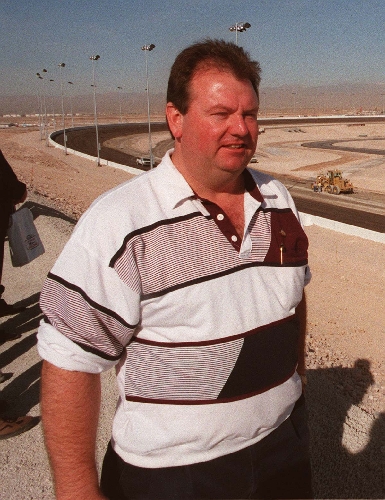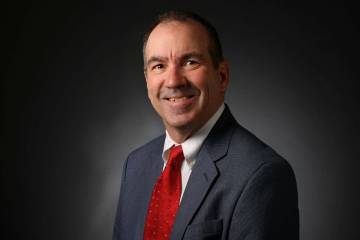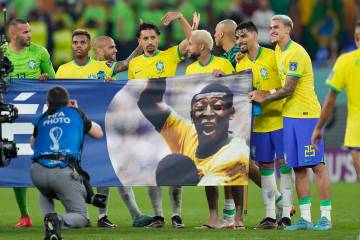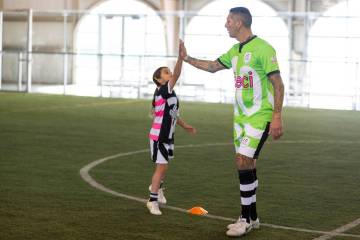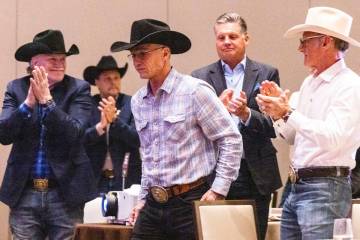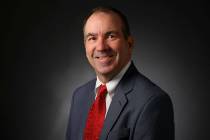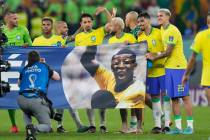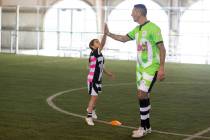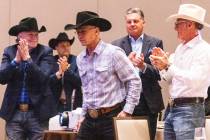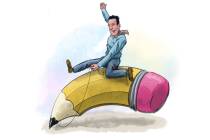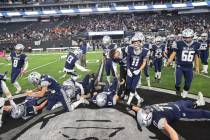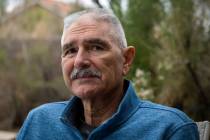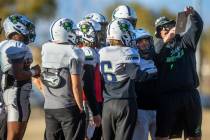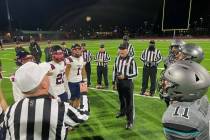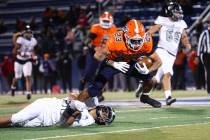Clyne’s dream even better in reality
First impressions, as it turns out, don't mean diddly or add up to squat.
I remember going to the Imperial Palace to meet Richie Clyne for the first time. This was years ago. Before anybody had made a buck off Danica Patrick.
Richie Clyne was some sort of big shot at the I.P. He also was the man behind the idea that evolved into Las Vegas Motor Speedway. For some reason, I thought he would look like Roger Penske, another guy who built speedways at the time. For some reason, I thought all guys who built speedways would look all spiffy and corporatelike, like Roger Penske.
Richie Clyne was not wearing a navy blazer and tasseled loafers when we were introduced. In fact, Richie Clyne was not wearing shoes. I know this, because when he put his stocking feet up on his desk, they nearly knocked over a framed photograph of Hulk Hogan and a little boy who I assumed to be of Clyne's loved ones.
This is the guy who is going to carve $200 million worth of superspeedway out of the Southern Nevada desert?
Later, when I was riding in Clyne's sports utility vehicle out at the speedway site and he was showing me where the various turns were going to be, a handgun slid out from under the driver's side seat. It banged to rest where Clyne was working the pedals like Boris Said at Watkins Glen. I noticed he was now wearing sneakers.
Dirt was flying. Rocks were flying. Handguns were flying.
And here I thought Darlington was a tough track.
I was going to tell Clyne he was nuttier than a barrel of grease monkeys if he thought he was going to build Charlotte Motor Speedway West on a chunk of real estate that resembled the Sea of Tranquility on the lunar surface.
When that pistol came flying out of the back seat, I changed my mind.
Before we headed back to town, Clyne showed me artist renderings of speedway museums and speedway wedding chapels and speedway restrooms staffed by attendants with little hand towels draped over their forearms.
Restroom attendants. At a speedway. What, no little mints for your HANS device?
Then I remembered that handgun.
"What a great idea," I remember telling Clyne.
Less than two years later, at the very moment Arie Luyendyk was blistering the track on an Indy Racing League qualifying run during Las Vegas Motor Speedway's opening weekend, workers were laying sod in the tri-oval with the green side down. The restrooms on the concourse were only half-built. Wherever you looked, there was confusion. And it was mass. I remember seeing Clyne sitting on a golf cart, sucking on a cigar. As if he had not a care in the world. As if he had everything under control.
The next day, Race Day, the grass in the tri-oval was right side up. The restrooms were finished. Except for the attendants with little hand towels draped over their forearms. Apparently, Clyne couldn't drag them out of the Mirage before the gentlemen started their engines.
There was an automobile race and it was exciting, and Tony Stewart creamed the wall and more than 67,000 spectators showed up to check it all out. Thousands more were still out on Interstate 15 or Las Vegas Boulevard stuck in traffic, cussing like A.J. Foyt and ripping up their tickets when Richie Hearn raced under the twin checkered flags to put his name in the record books.
Eventually, Richie Clyne sold the speedway to Bruton Smith, another rich guy who builds race tracks and wears tasseled loafers. Before long, Las Vegas Motor Speedway had palm trees and luxury suites and a modern administration building and Dale Earnhardt and Jeff Gordon and the great Richard Petty, checking out "them cats" from pit lane.
NASCAR had arrived. Richie Clyne's vision had been fulfilled.
All except the part about the attendants in the rest rooms with little hand towels draped over their forearms.
Las Vegas Review-Journal columnist Ron Kantowski can be reached at rkantowski@reviewjournal.com or 702-383-0352.



